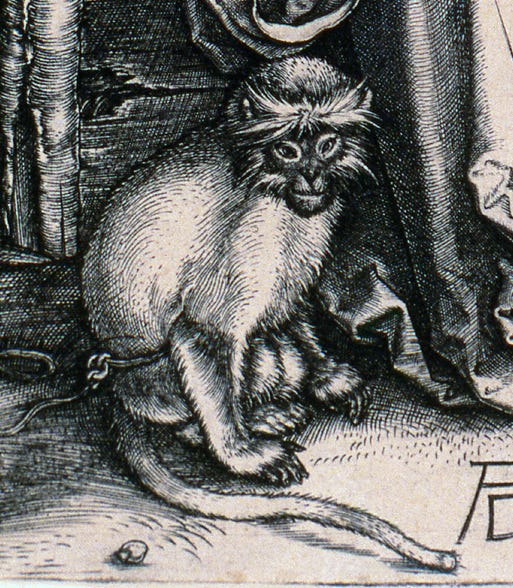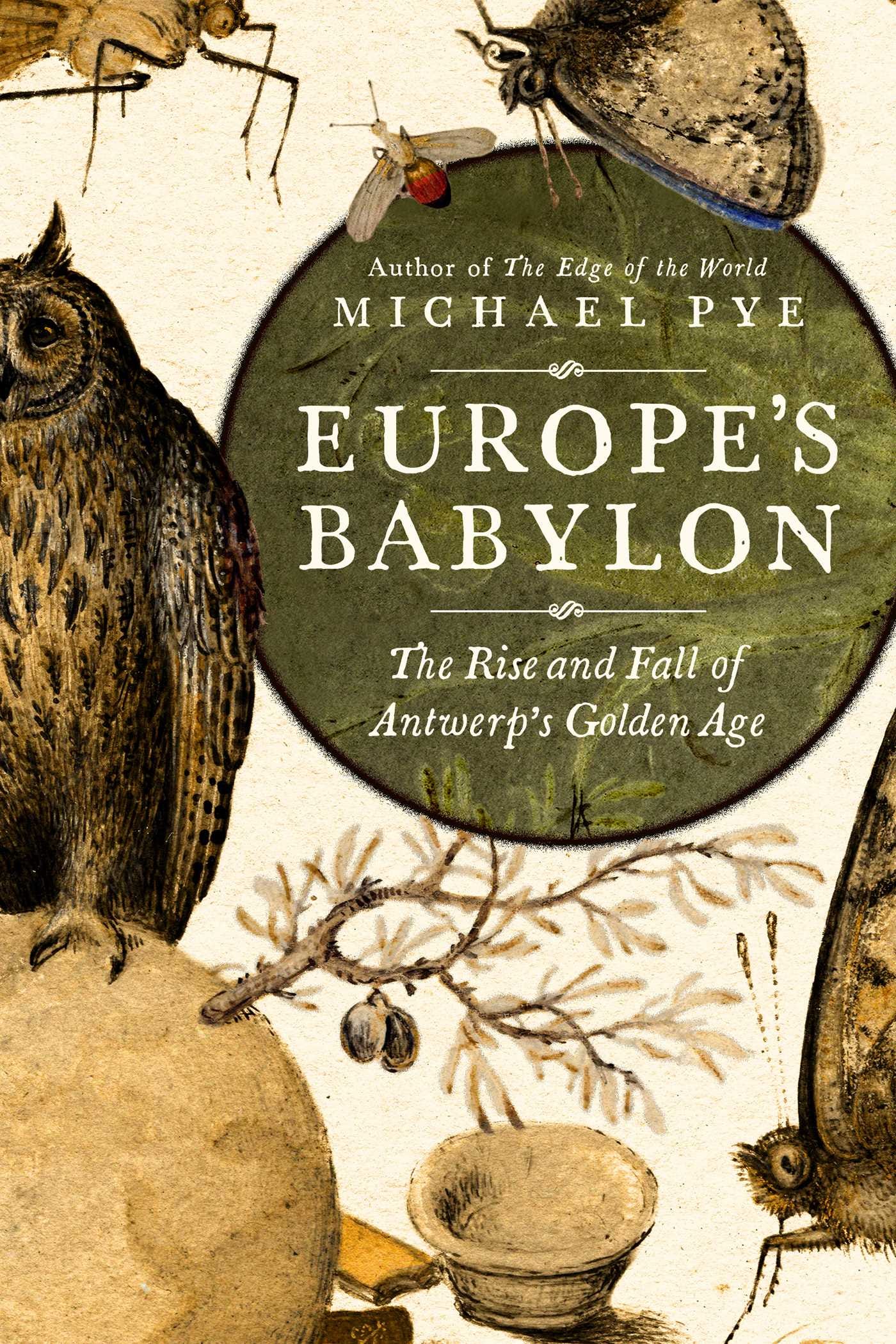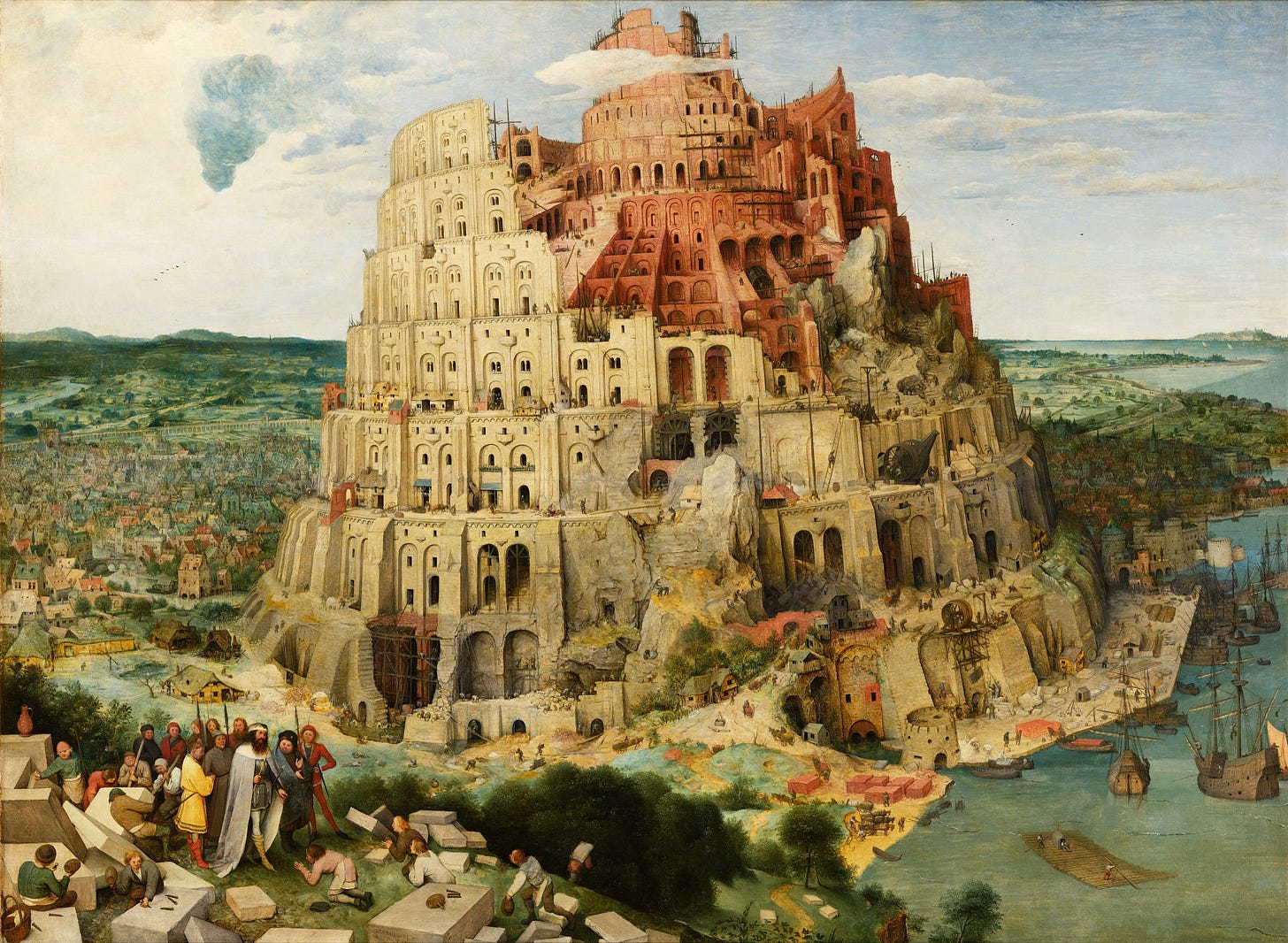Albrecht Dürer was not just shopping for dye and seeking a renewal of his annuity from Charles V when he visited Antwerp in 1520. He also ogled Aztec gold and bought tortoise shells and coral and elk’s hooves. Perhaps most significantly, Dürer paid four gold florin for a small baboon.
A human being is blessed when the natural world becomes not a source of terror, nor a sponge from which to wring scarce resources, but an object of fascination. You’re living in a time of plenty if you get to look at wild animals and lovingly immortalize them. Dürer delighted in monkeys of all kinds and included many of them in his drawings and lithographs. He owed his monkeyphilia to his artistic talents, and his luck in visiting the providential city of Antwerp when he did.
Michael Pye’s Europe’s Babylon: The Rise and Fall of Antwerp’s Golden Age is full of these kinds of mythopoetic musings on sixteenth century Antwerp. The book offers A-town as a birthplace of our modern world. The future really got going in that place at that time–roughly simultaneously as Venice, eventually ceding to Amsterdam then New York (NYC is the setting of Pye’s novel The Drowning Room, about a Dutch pelt dealer).
Eschewing a traditional narrative, Pye lists disparate examples of innovation and describes them as indicative of a wild and courageous time. The liberalism and widespread heresy of Antwerp came with books–the city’s printers were disseminating “paper bullets.” This was a restive city, at odds with the Holy Roman Empire, which tolerated Antwerp’s intransigence until financial desperation led to a crackdown.
I picked up a first edition at Moe’s in Berkeley. The Brueghel color prints are worth the price of admission. The master’s Tower of Babel canvas explicitly links Antwerp with that ancient cursed city. (Barbara Kaminska points out that the picture’s utility in making harmony out of diversity, burghers hashing out ideas with Bruegel as a visual aid, is an ironic opposite of Babel’s significance as a place without effective communication). The image helps prove Antwerp’s as a “global city” so many years before communication technology or even mass transit existed.
You get the sense of Benelux as an ultimate crossroads. Overseas exploration made Antwerp a frontier city, incessantly fertilized by knowledge from abroad. Its cosmopolitan wiliness helped it elude imperial control. And the upshot of this vitality was the initiation of modern intellectual and financial and political tendencies. In the mid 1500s Ortelius was fine-tuning his geographical knowledge, and van Schoonbeke was executing a curious combination of city-planning and banditry. An excellent chapter titled “Money” recounts a tale of two traders out for one another’s blood.
It all gets wrapped up in a climactic chapter with the 1566 Beeldenstorm (a reaction to Christianity as a “sacrilegious puppet show,” in the Canon van Nederland’s memorable phrase), then swims over to a dishy account of the difficulties of the printing trade. Pye assumes more knowledge about the wars of religion than I have, and spends his time on baggy disquisitions of varying degrees of interest.
Antwerp was worshiping commerce well before the column praising the Congo Free State went up in Stadspark. The city’s dogged residents were bucking the clergy and developing the methods that dominated the world. Pye’s book is a handy guide mostly because the empire partially erased Antwerp’s legacy, and also because the city was eclipsed by more traditional imperial centers.
Further Reading:
Chipps Smith, Jeffrey, “Albrecht Dürer as Collector,” Renaissance Quarterly, Vol. 64, No. 1 (Spring 2011).
Kaminska, Barbara A., “‘Come, let us make a city and a tower’: Bruegel the Elder’s Tower of Babel and the Creation of a Harmonious Community in Antwerp,” Journal of Historians of Netherlandish Art, Summer 2014.
Pye, Michael, Europe’s Babyon: The Rise and Fall of Antwerp’s Golden Age, Pegasus, 2021.







